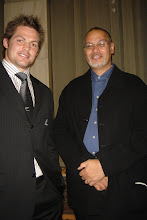Between I840 and 1852 (the Crown Colony period) about 27,500 people arrived in New Zealand, of whom about two-thirds came direct from the United Kingdom. The numbers were not great, but they were significant in establishing future patterns. The major explanation for this migration is the recruiting efforts of the New Zealand Company and its offshoots, the Canterbury Association and the Otago Association. Though inspired by Edward Gibbon Wakefield's vision for an ordered community, the company was a business proposition. It purchased land from Maori for on-sale to investors who were expected to come out as 'colonists'. Many of them chose not to do so, especially those who bought land in Nelson, but a few did and became significant figures in the new communities.
Of the 27,500 people who came to New Zealand in these years, about 14,000 - over half - came as assisted immigrants, their passage paid for by the Company or its successors.
In the mid- 1840s the number of such immigrants fell to a trickle as the company faced legal and financial difficulties, the Northern War broke out and there was growing pessimism about the colony's future. Then came a second wave of assisted migrants. There was an organised group from Scotland led by Free Church Presbyterians, who arrived with boatloads of Scots in Otago in 1848. Two years later the Church of England Canterbury Association brought the first four ships of English settlers to Lyttelton.
Auckland also attracted a few smaller organised groups. In 1842, amid claims that the British government had breached an understanding not to send convicts to New Zealand, 98 young boys from Parkhurst Reformatory arrived. Another 31 followed a year later, but such was the outcry that the experiment was not repeated. Also in 1842, as we have already seen, 514 people from Paisley, near Glasgow, came out to Auckland as a response to the depression in the local shawl-making industry. There were also over 400 assisted under the Poor Law Amendment Act, administered by the Colonial Land and Emigration Commissioners.
Finally, the 1840S saw some free settlers arriving in the colony as individuals. There were some government officials, merchants and aspiring younger sons of the respectable class who came out to make a mark in the colony. Auckland attracted a number of independent immigrants from across the Tasman, including quite a few people with an Irish background.
Between 1853 and 1870 the Pakeha population rose from about 30,000 to over 250,000. Much of this increase was the result of immigration. During these years almost 250,000 people migrated to New Zealand and about 100,000 left, resulting in a net gain of almost 150,000 Probably two-thirds of the long-term migrants came direct from the United Kingdom (with the rest largely from Australia),
The provincial governments took responsibility for immigration under the New Zealand Constitution Act 1852. For the next eighteen years, until the central government began to take over immigration, most of the provinces had schemes for encouraging migrants. Usually provinces hired agents in Britain and Ireland to go out and recruit immigrants with the offer of cheap (that is, 'assisted') or free passages to New Zealand. Immigrants were seen as the key to growth and prosperity Hawke's Bay, Wellington, Nelson and Southland all had small schemes for bringing in immigrants. Otago province was more active, but unfortunately most of its records have been lost
Auckland province used a different system to attract migrants - the lure of land. Under a scheme introduced in 1858, agents in the United Kingdom had authority to grant land orders to prospective emigrants at the rate of 40 acres for every person aged eighteen or over, and 20 acres for those between five and seventeen. In the ten years of the scheme 15,516 land orders were issued, and these were probably responsible for bringing in over 40 per cent of Auckland's immigrants during these years.
Phillips and Hearn - Settlers NZ Immigrants 1800-1945




very good mahi e hoa keep it up. Whakaeke Ritete
ReplyDeleteThank You. Much appreciated.
ReplyDelete